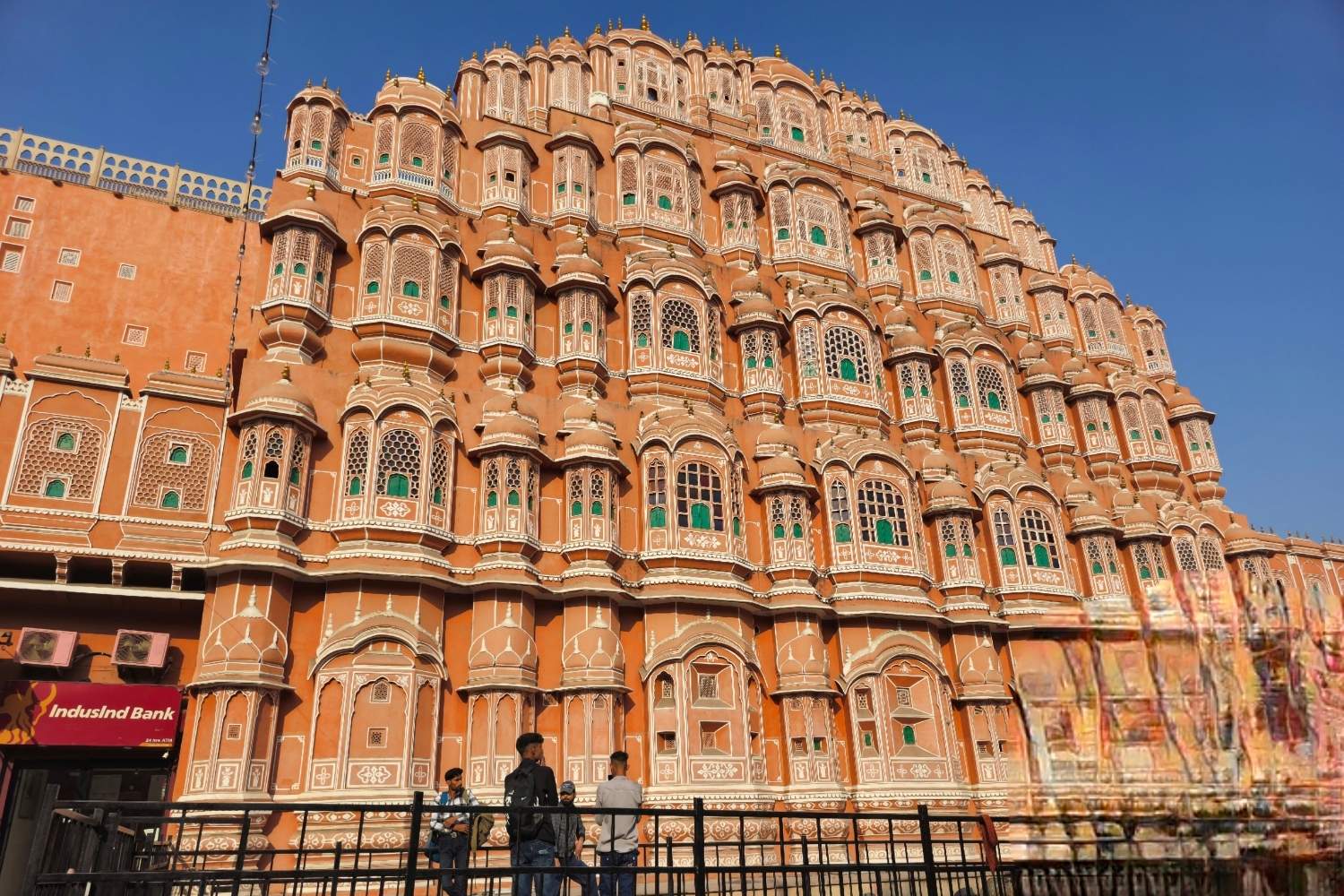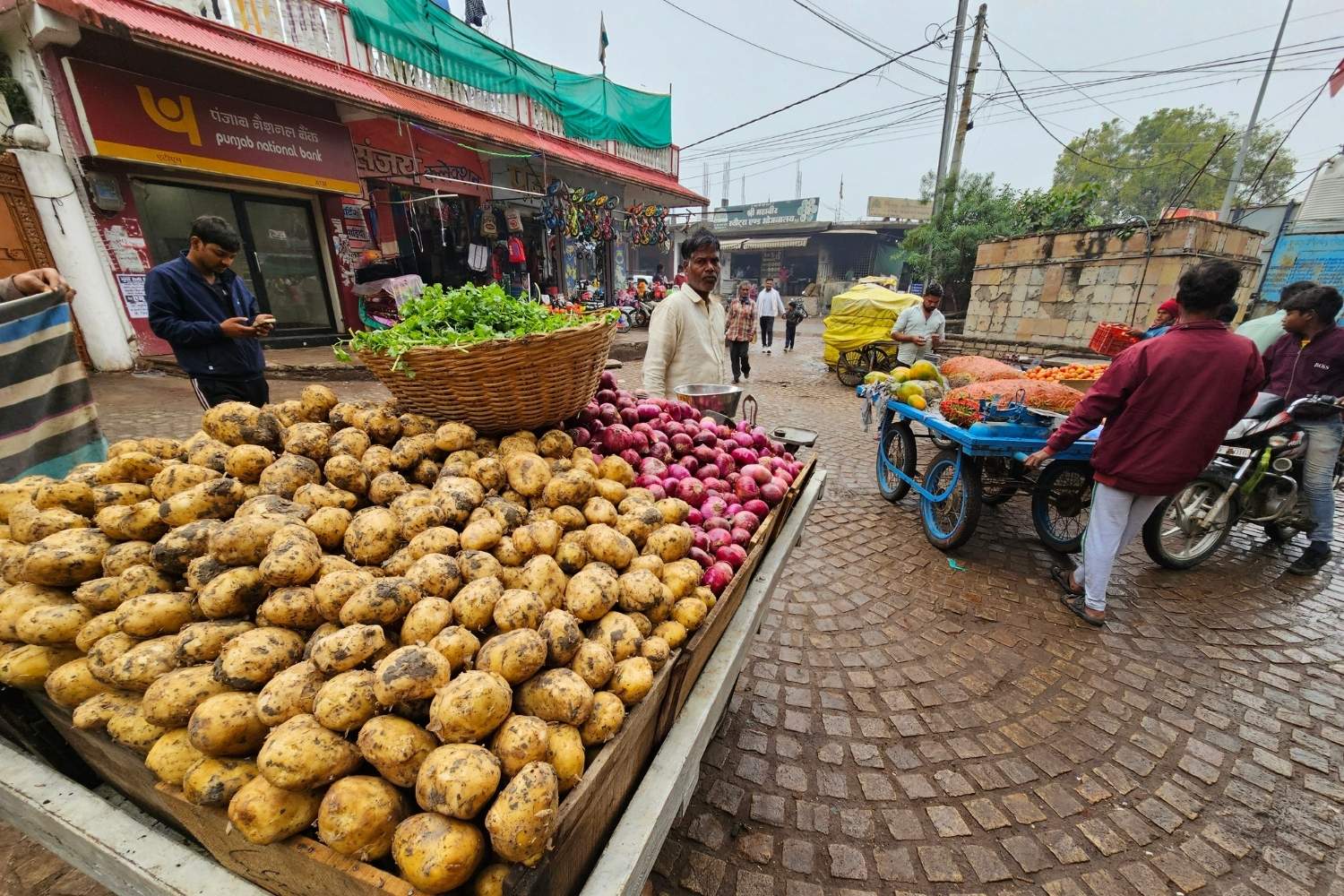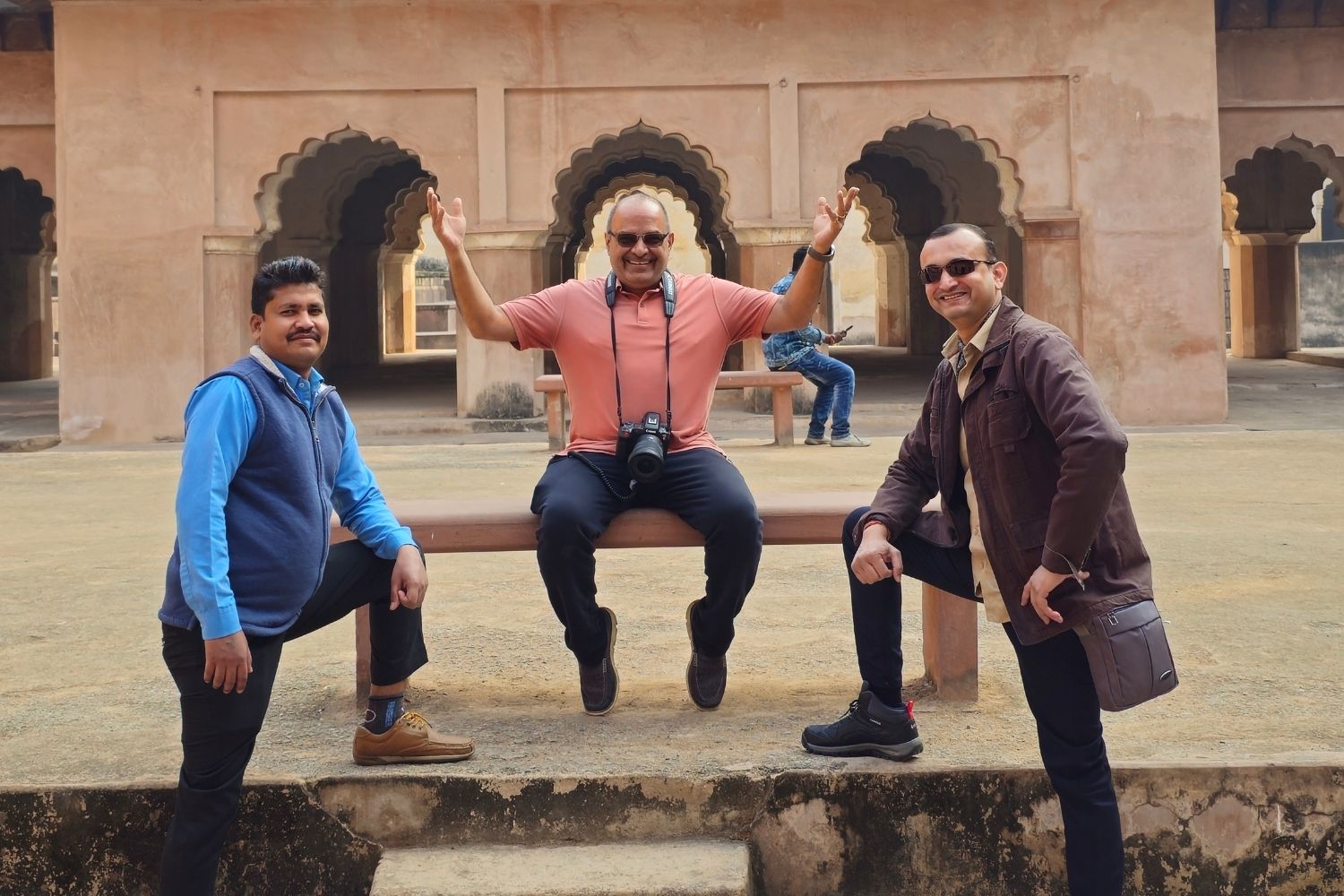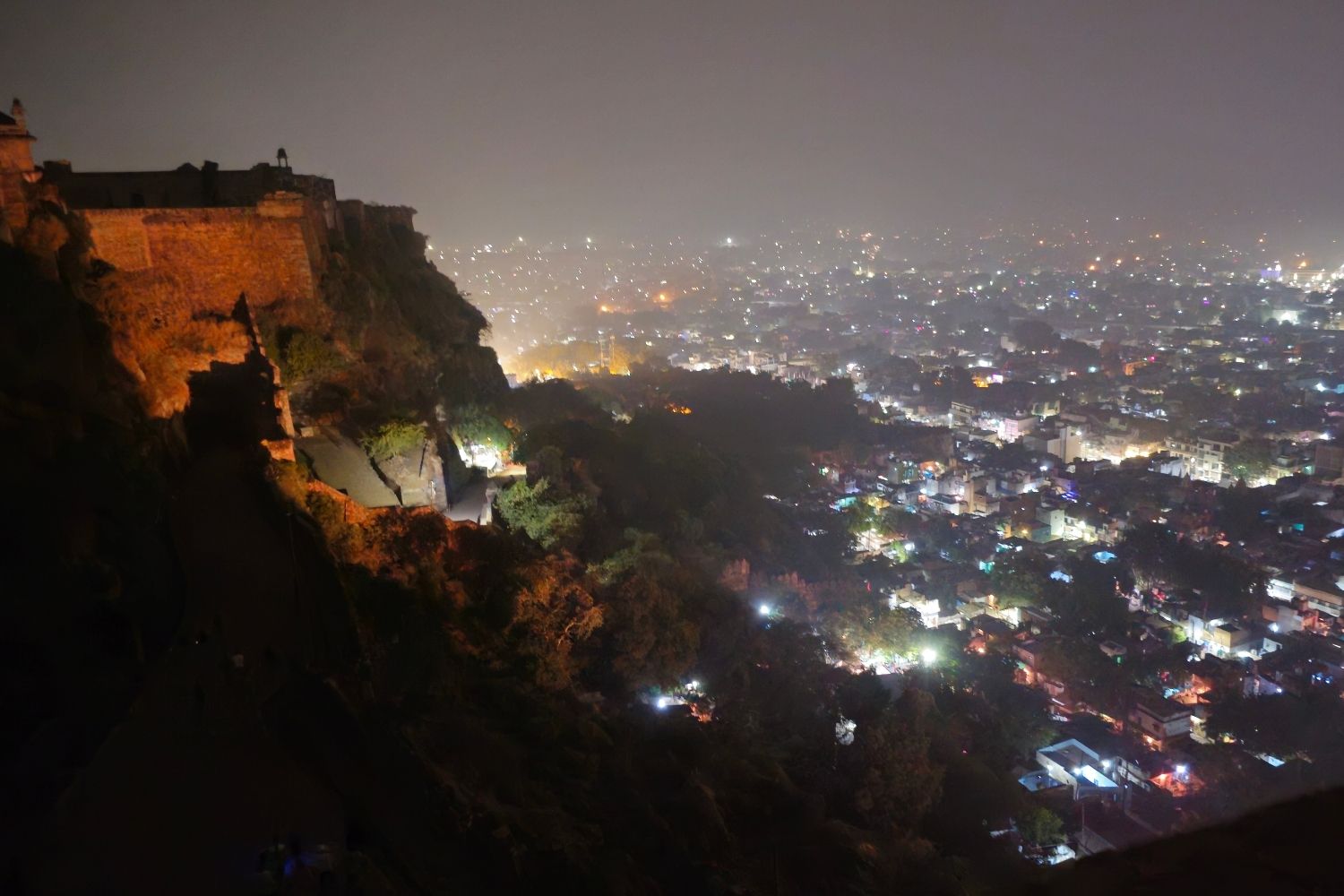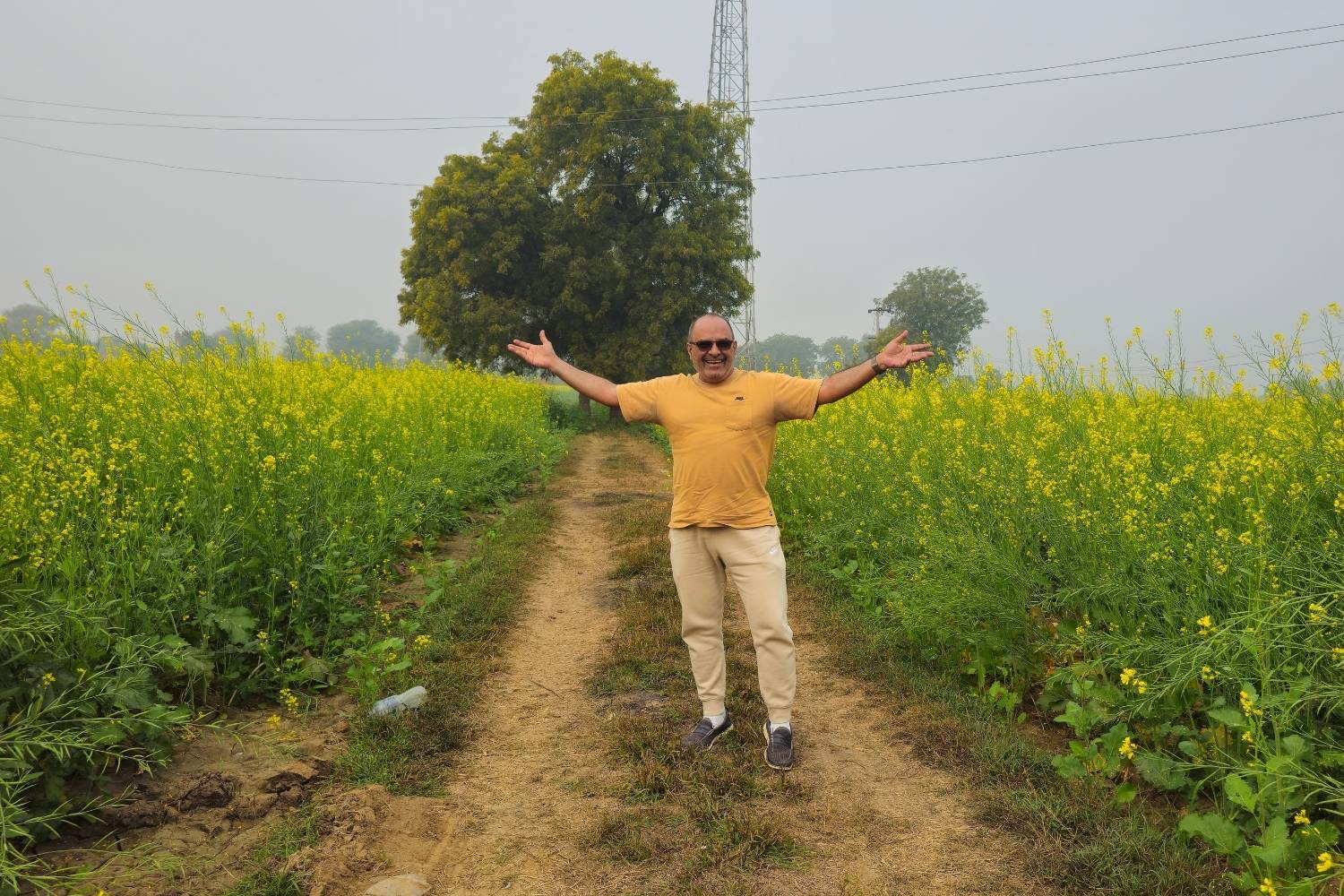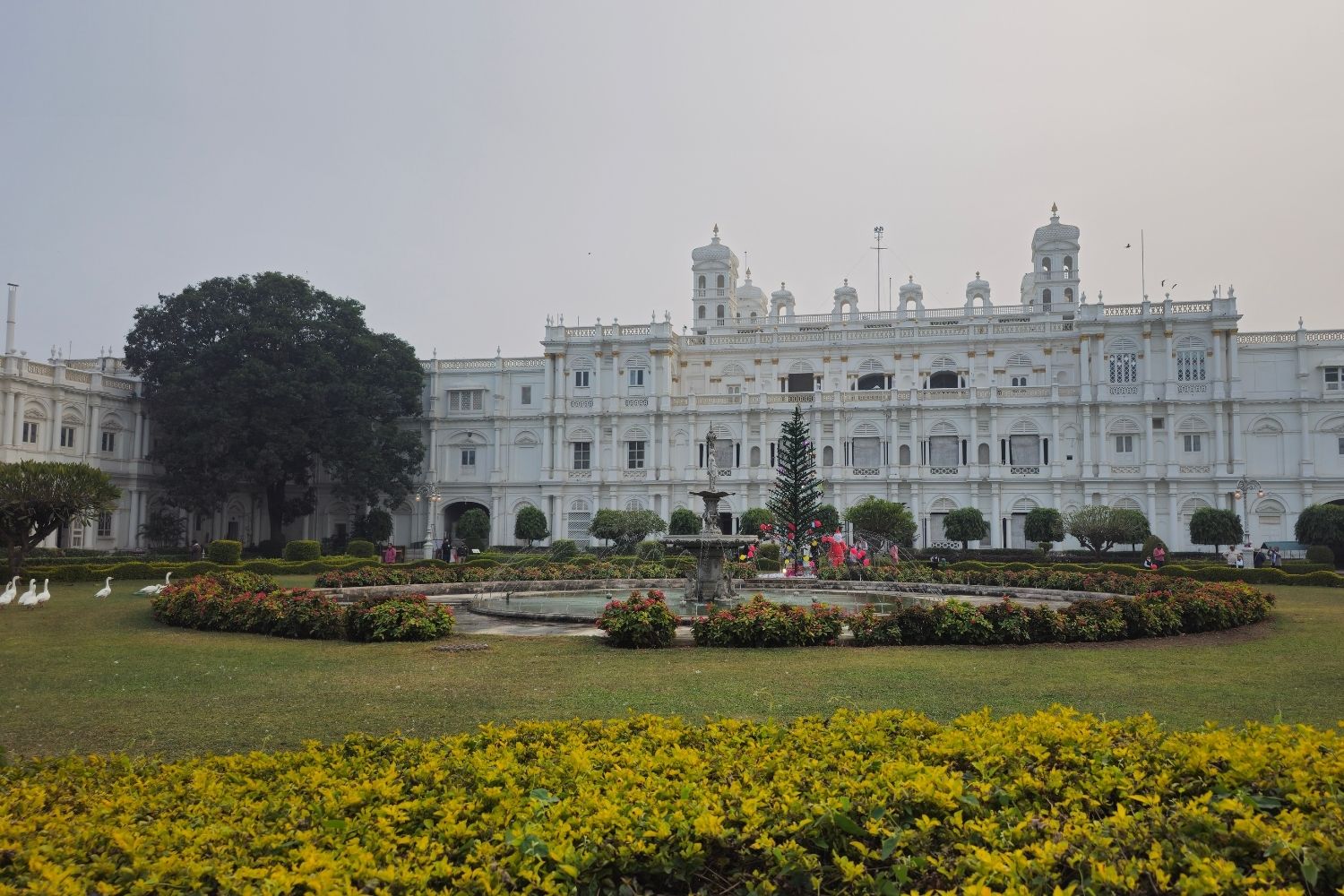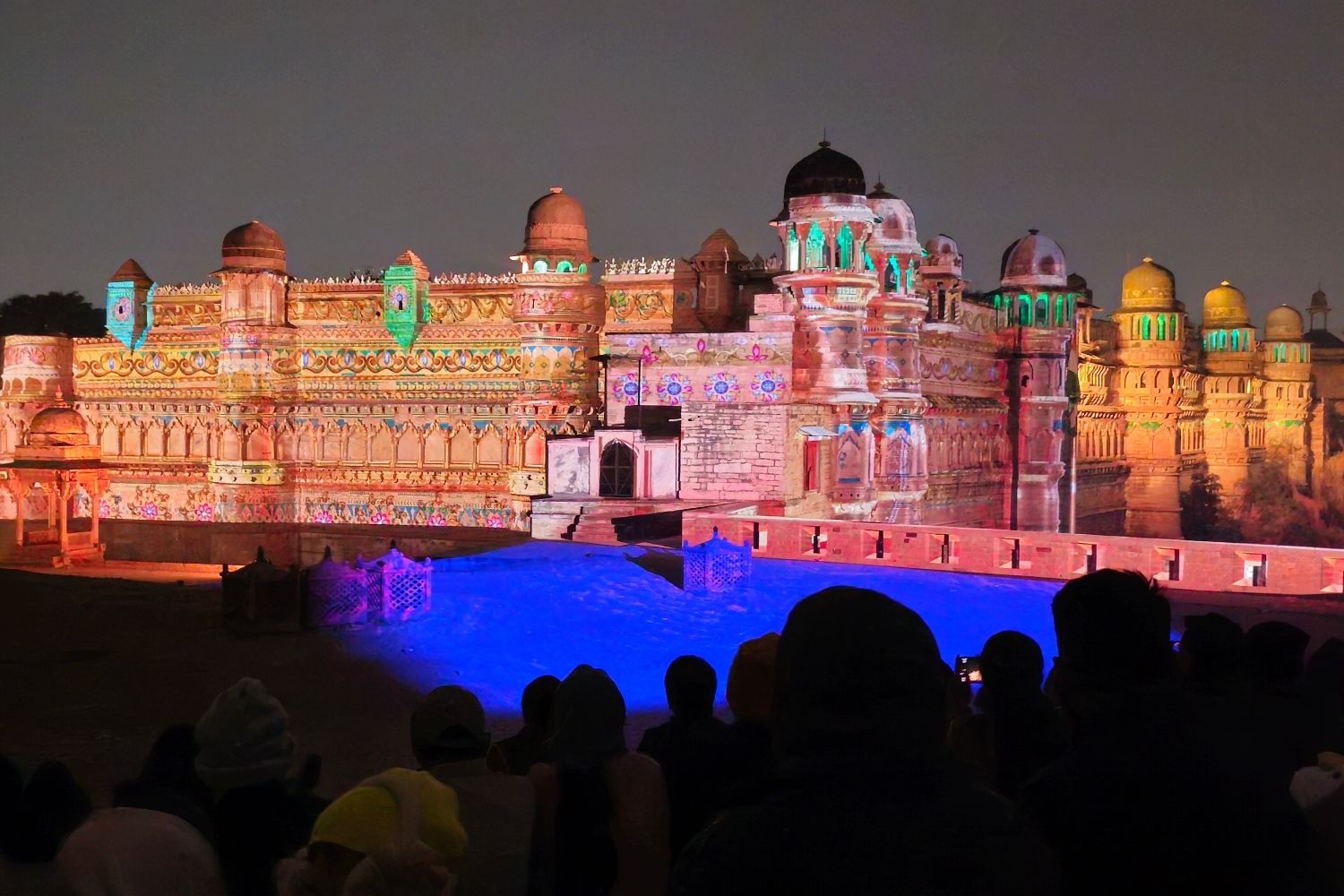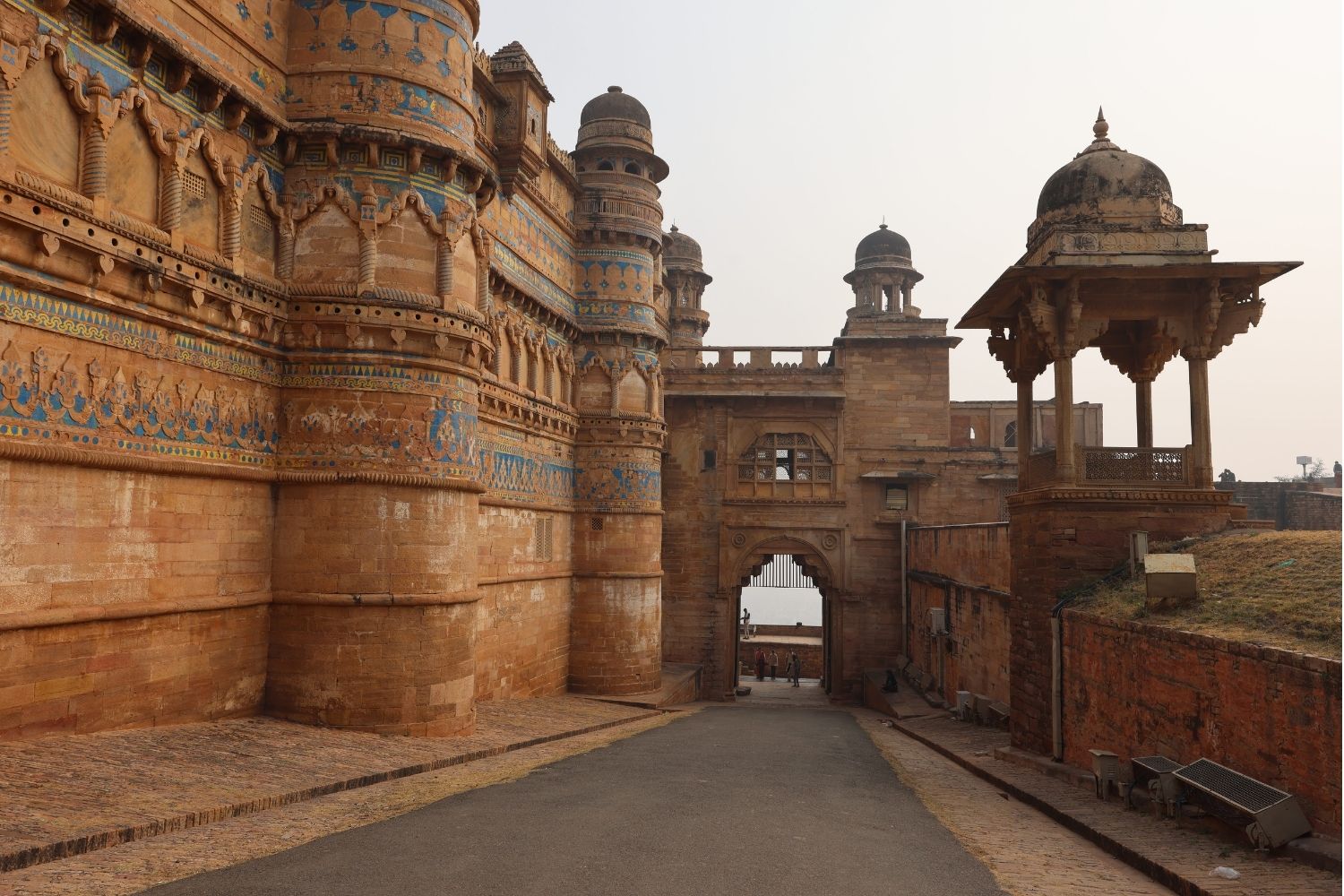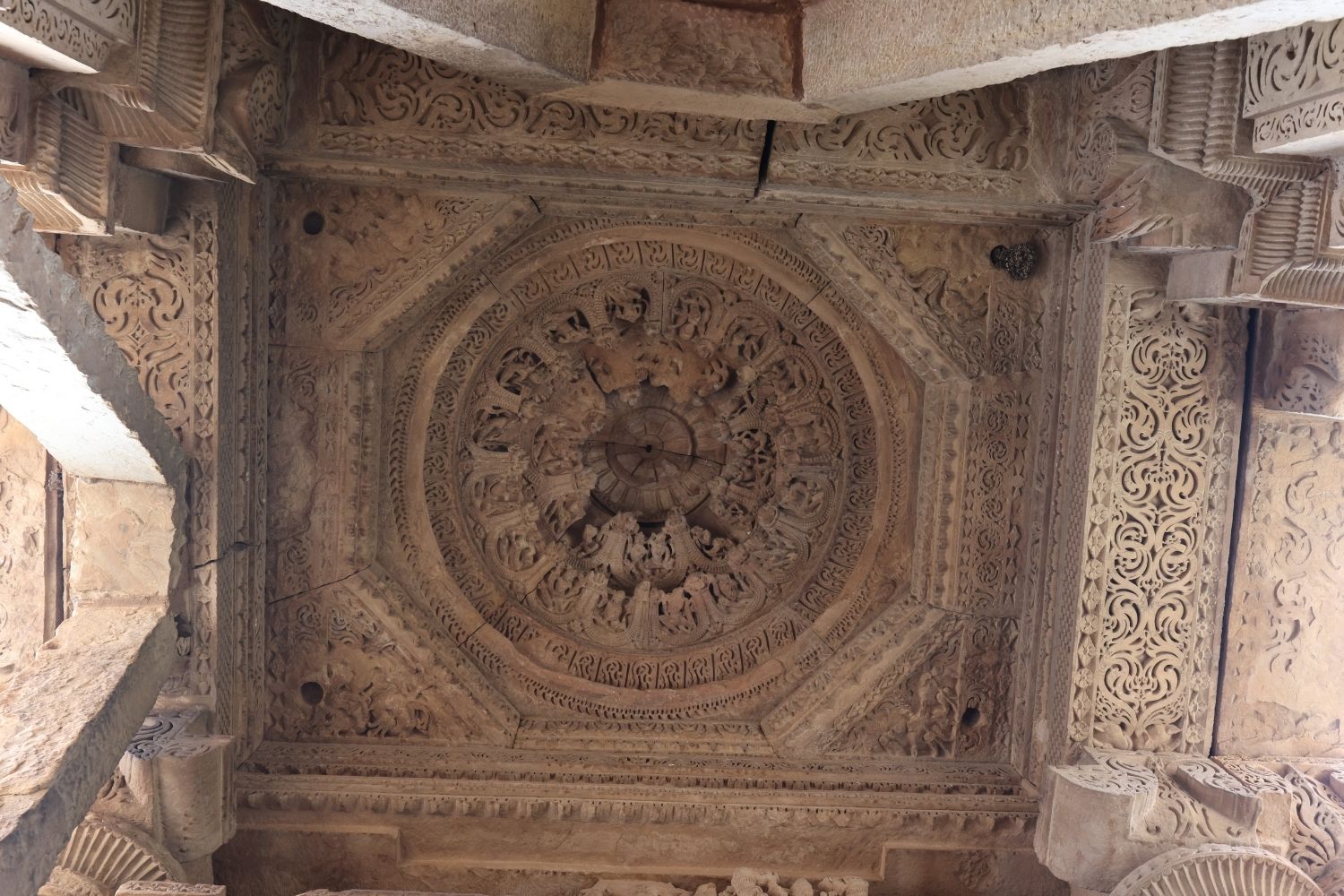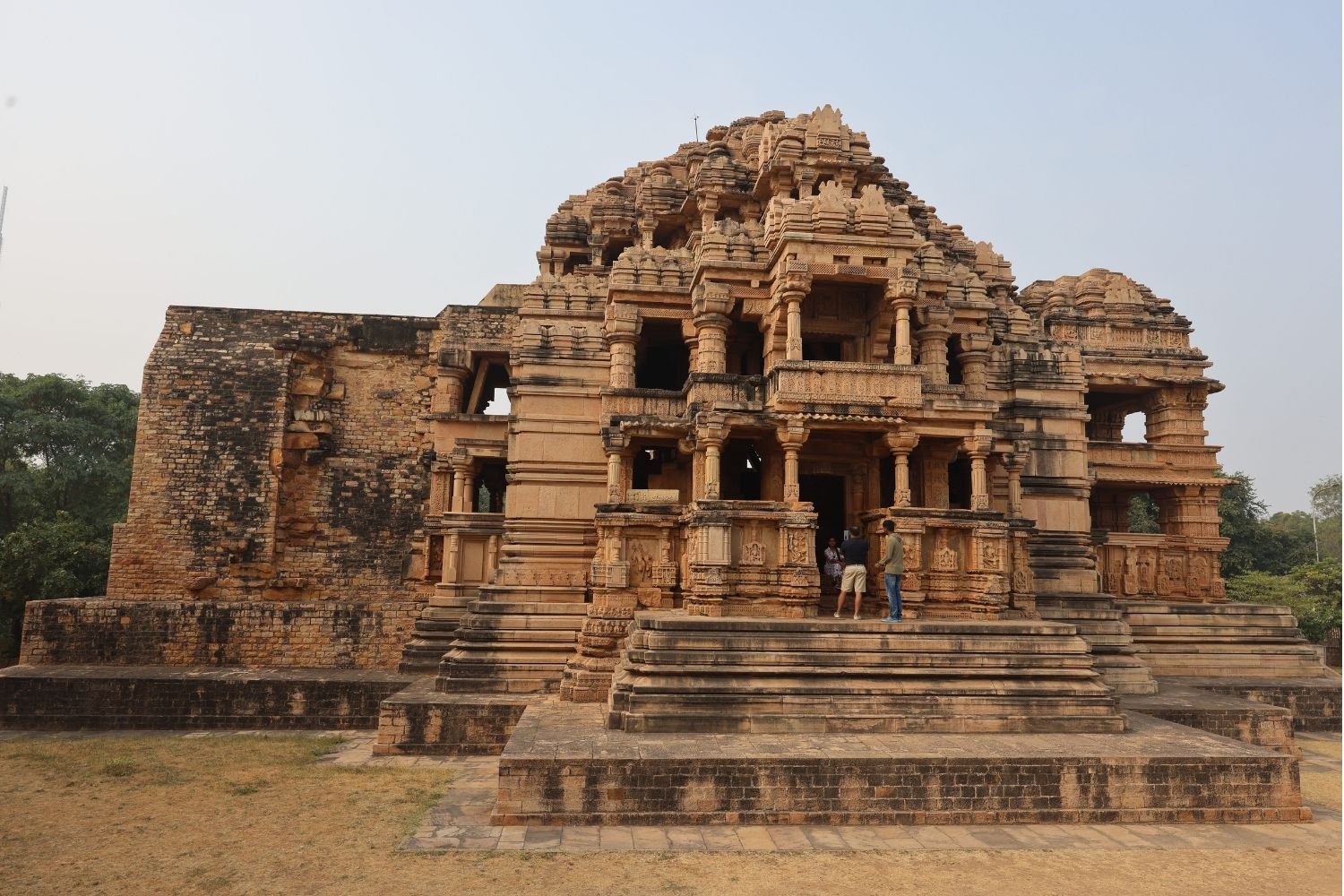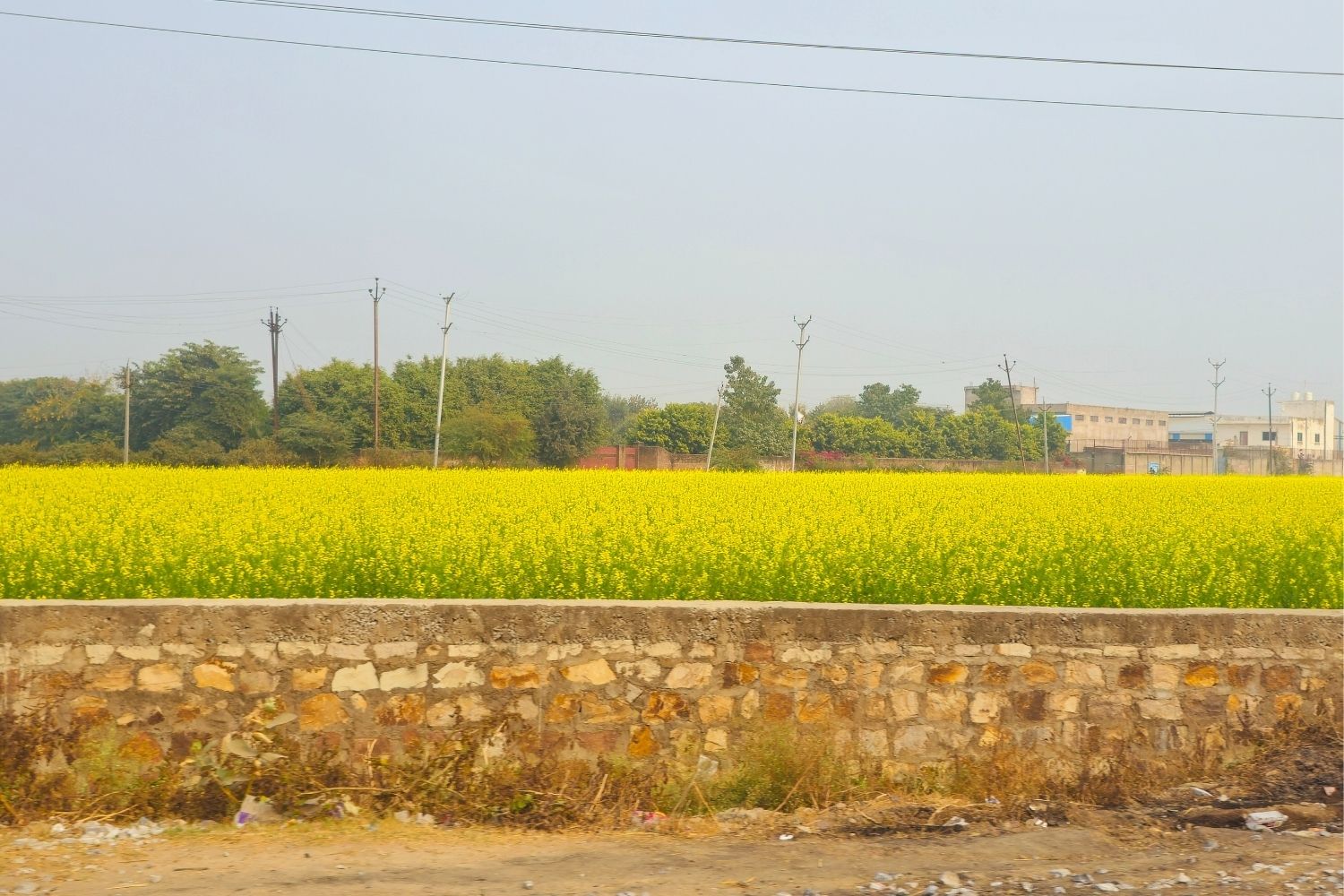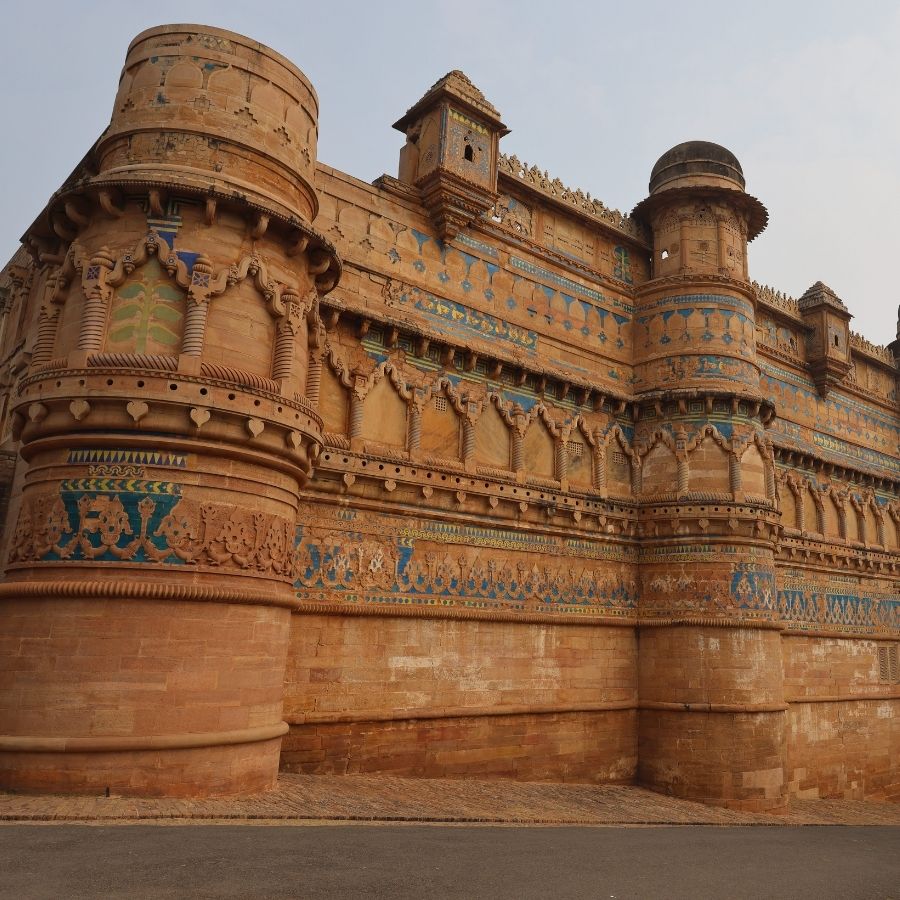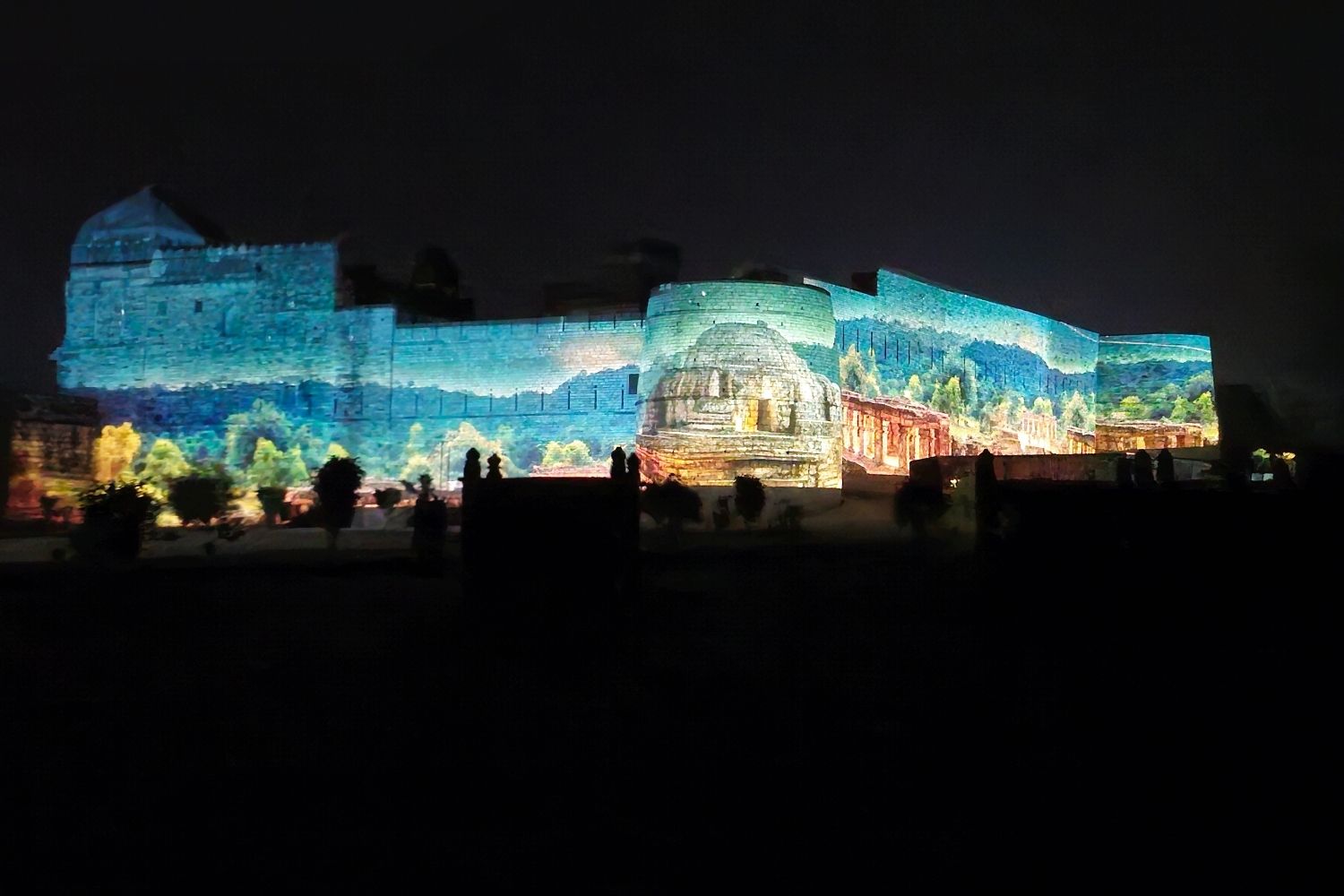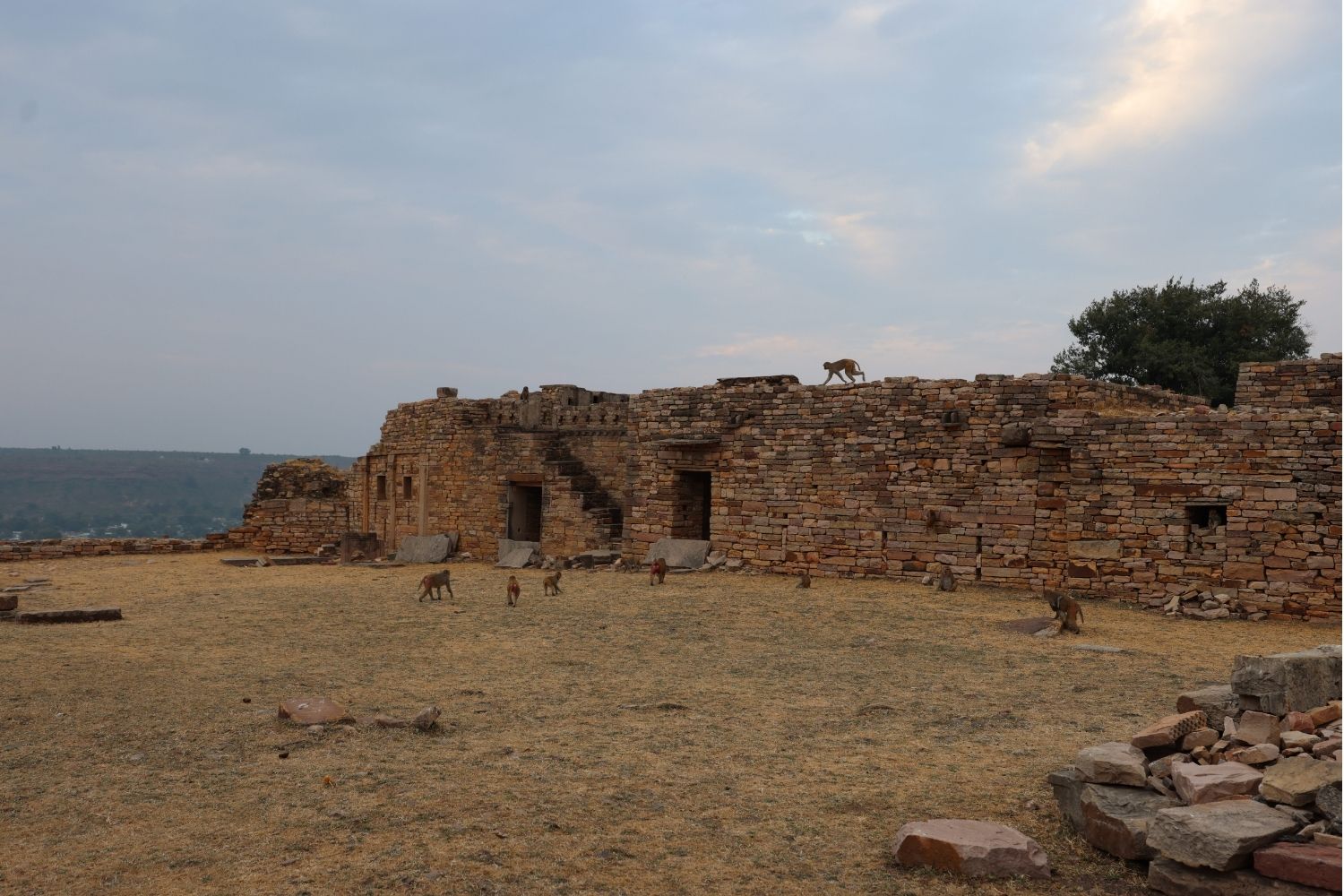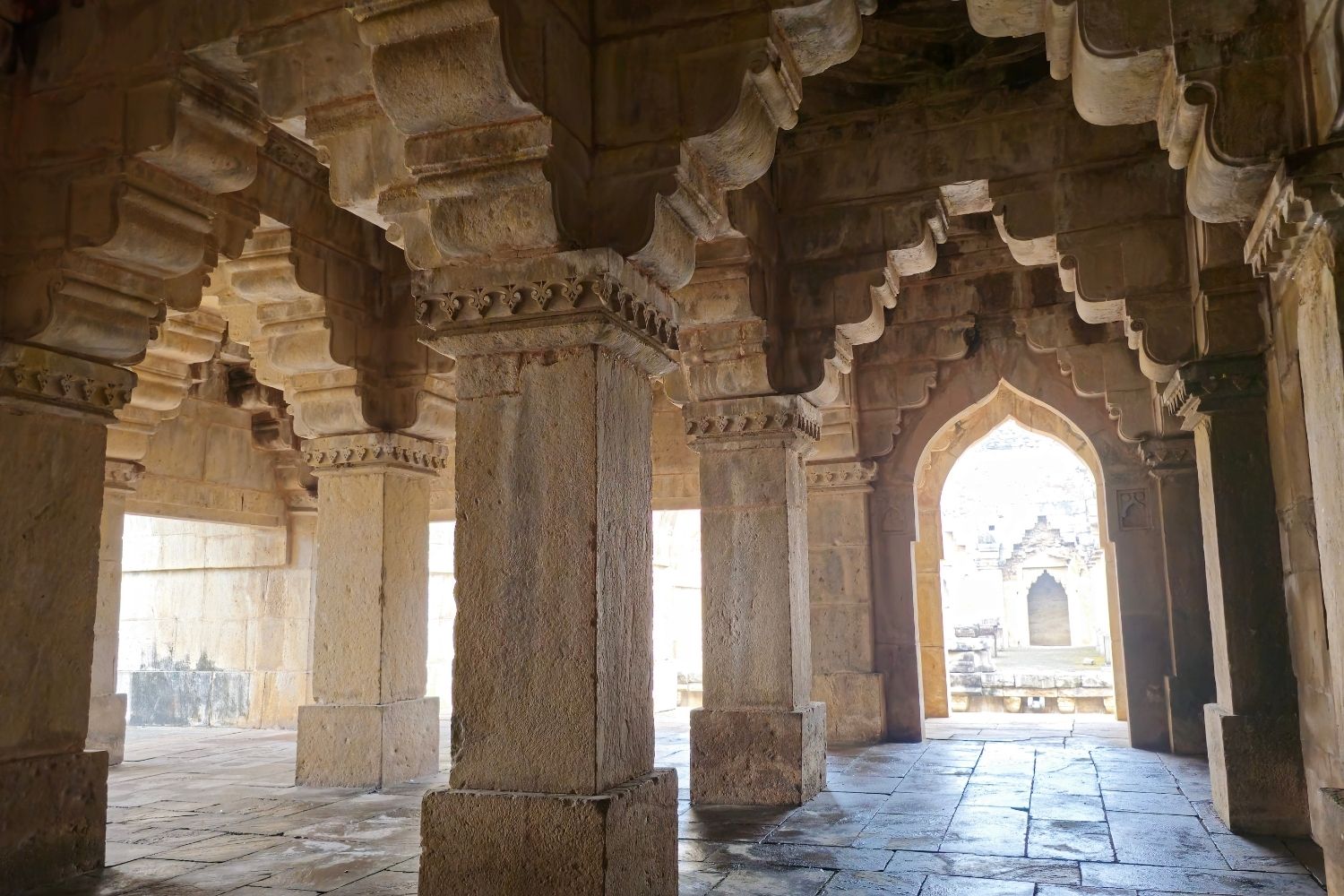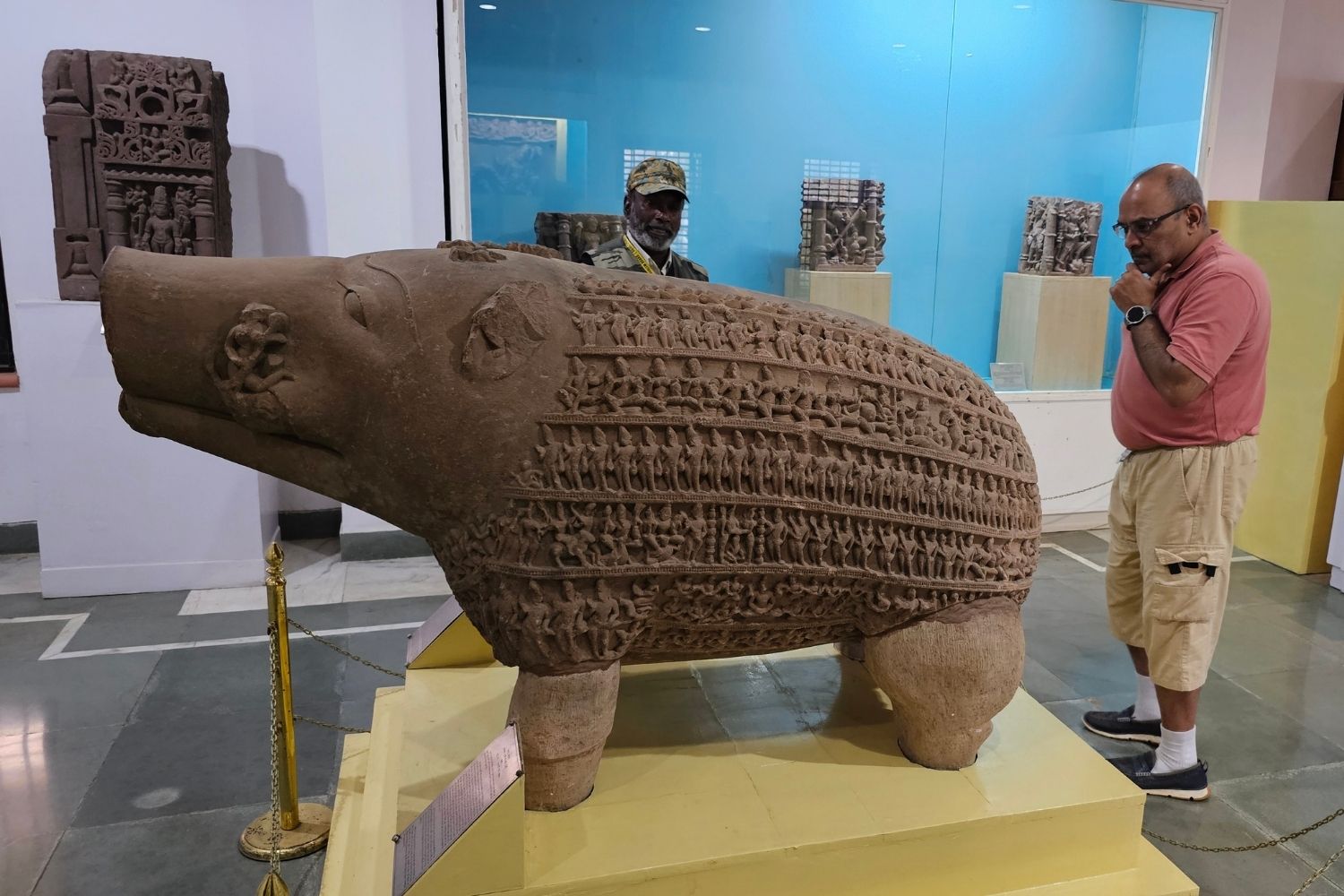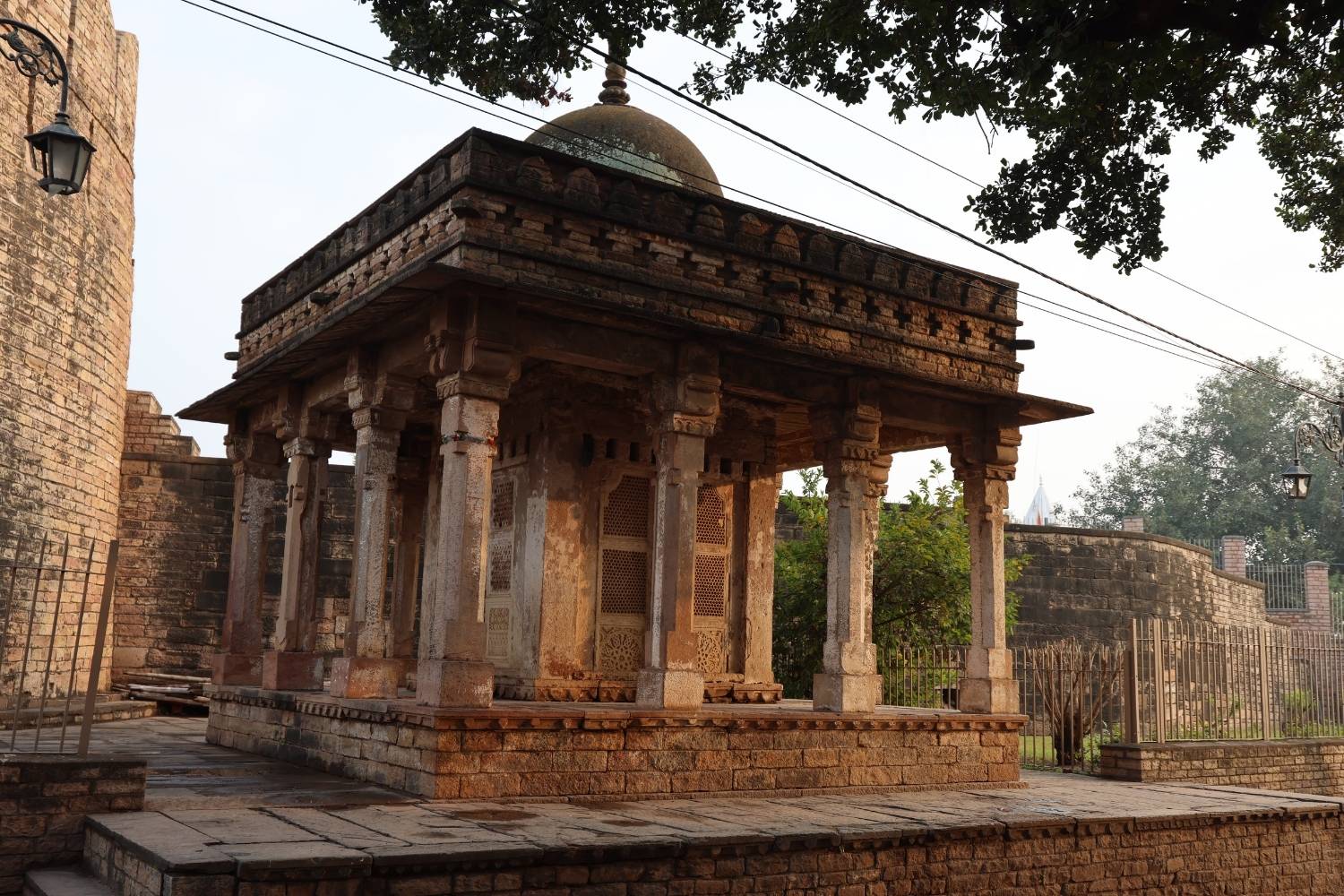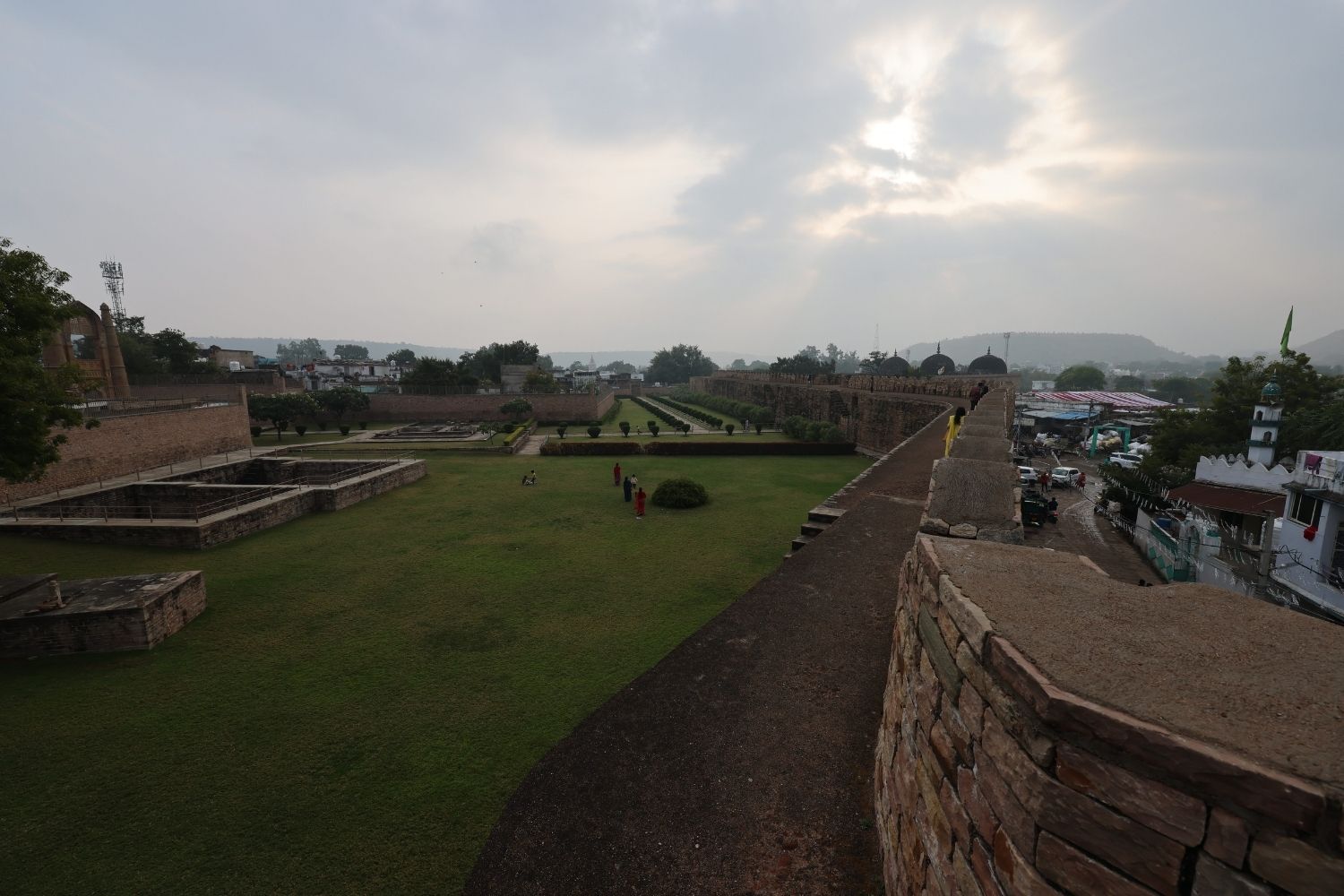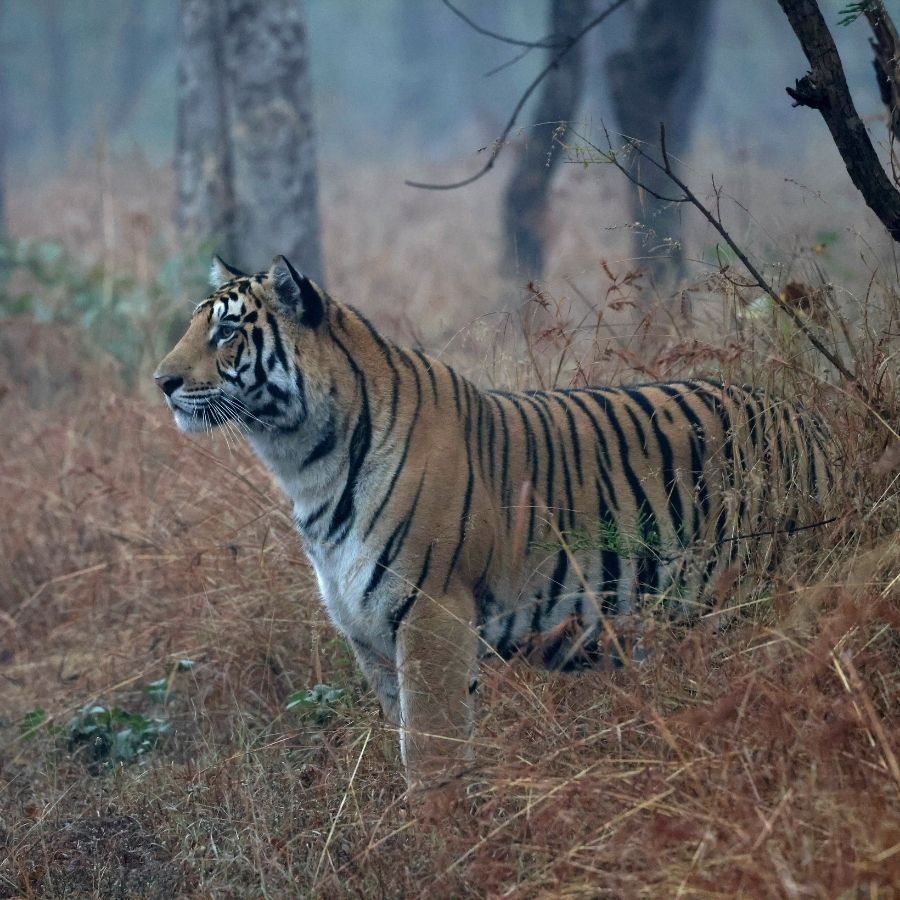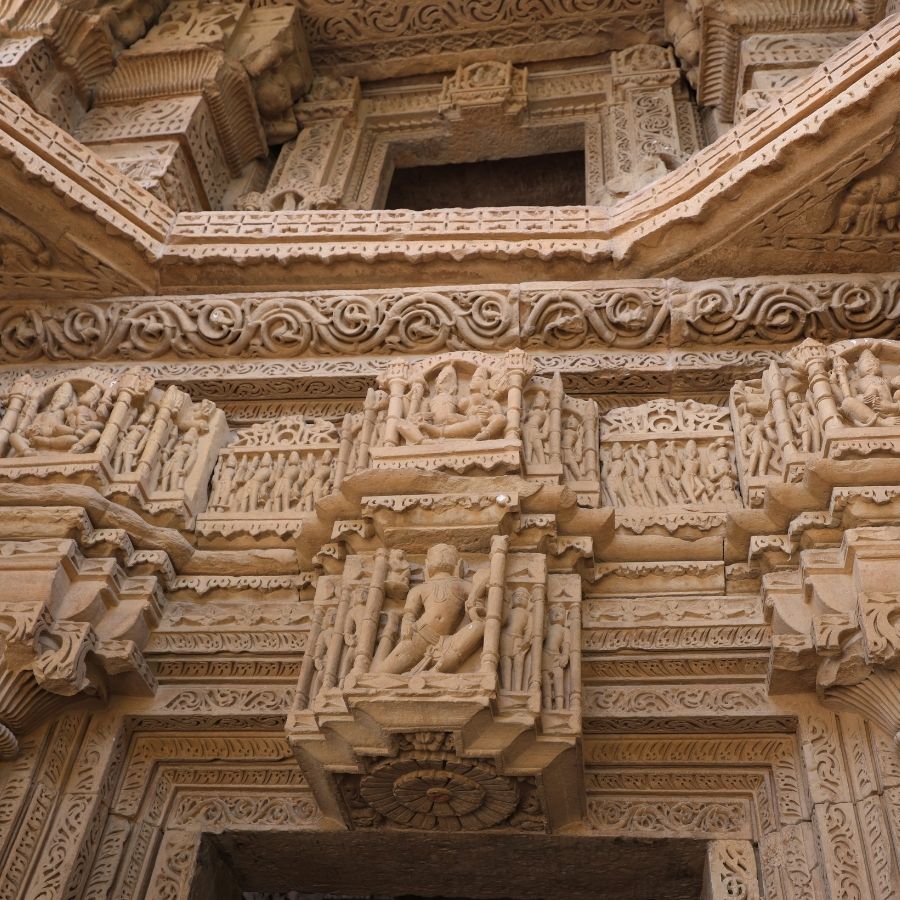India

A Whirlwind Tour of India: From Majestic Forts to Ancient Temples and Wildlife Encounters - A Deeper Dive
My recent trip to India, from December 25th, 2024, to January 11th, 2025, was an absolute whirlwind of culture, history, and natural beauty. This itinerary, expertly crafted by my sister and brother-in-law, took me through the heart of North and Central India, culminating in the vibrant South. All the places that were new to me. Buckle up, because this is a journey you won’t want to miss!

North & Central India: A Royal Encounter - Unveiling Architectural Marvels
My adventure began at my niece’s wedding in Jaipur, a four-day grand event straight out of a Bollywood movie! Then I embarked on a “Road Trip…With Ravi”, sorry couldn’t resist, to Gwalior in the state of Madhya Pradesh. The 5.5-hour drive offered glimpses of India’s lush agricultural landscape. Fields of vibrant mustard flowers painted the countryside in hues of yellow, interspersed with patches of wheat and sugarcane, showcasing the fertile plains that have sustained civilizations for millennia. Gwalior Fort, a majestic hilltop fortress, came alive with its captivating sound and light show.

In-depth Knowledge of Gwalior Fort:
The fort’s strategic location atop a hill, its massive ramparts, and the intricate carvings within its various palaces and temples are testaments to the advanced engineering and artistic skills of the past. The fort’s water management systems, including reservoirs and wells, are particularly impressive, considering the era in which they were built. The history of the fort goes back to the 5th century or perhaps even earlier. The second oldest record of “zero” in the world was found in a small temple (the stone inscription has the second-oldest record of the numeric zero symbol having a place value as in the modern decimal notation), which is located on the way to the top. The inscription is around 1500 years old. My regal stay at the 5 star Taj Usha Kiran Palace Hotel added to the royal experience. There’s something very important to mention about the hotel rating system. There’s 5-star rating in the rest of the world but it’s a WHOLE other thing in India! Regal and elegant only scratch the surface, it must be experienced to be believed!

Exploring Gwalior Fort
The next day, I explored the fort in daylight, marveling at its intricate architecture and rich history. The Jai Vilas Palace Museum, a relatively modern addition compared to the fort, showcased a fascinating blend of European and Indian architectural styles, reflecting the influence of different eras. A short drive brought me to Orchha, where the sound and light show at the Orchha Palace/Fort was equally enchanting. This fort, built by the Bundela Rajputs, is a masterpiece of Rajput architecture. Its layered structure, incorporating elements of both defensive and aesthetic design, is remarkable. The intricate detailing on the palace walls, including murals and carvings, speaks volumes about the artisans’ skills. Staying at the MPT Sheesh Mahal Hotel, nestled within the palace itself, was a truly unique experience, offering a glimpse into the lives of royalty.

Making My Way to Orchha's Treasures!
Orchha’s treasures unfolded the following day: the Royal Chhatris, cenotaphs built in memory of the Bundela rulers, are architectural marvels in themselves. Their varying sizes and designs reflect the status and accomplishments of the individuals they commemorate. The Chaturbhuj Temple, dedicated to Lord Vishnu, is renowned for its towering structure and intricate carvings. The exquisite frescoes of the Lakshmi and Ram Temples showcase the vibrant colors and artistic finesse of the period.

Onward to a Small Historic Town called Chanderi
From there, I journeyed to Chanderi, a historic town known for its handloom industry but don’t let that fool you, there are thousands of temples, monuments and historical sites here to see. The drive, again, showcased the rural heartland of India. My two-night stay at the MPT Kila Kothi Hotel in Chanderi Fort was a step back in time with stunning views of the surrounding areas from it’s hilltop location. I explored the fort, the museum, and the various mahals (palaces) scattered around the town. Chanderi’s strategic importance as a trading center is evident in the fort’s robust design. The local weavers’ skills, passed down through generations, were evident in the beautiful Chanderi sarees.

Pandav Caves and Falls at Panna National Park
The journey continued to Pashan Garh, a 5-hour drive. The changing landscapes offered a glimpse into the diverse geography of India. The Pandav Caves and Falls provided a refreshing break before an exciting night safari at Panna National Park, where I hoped to catch a glimpse of the famed Bengal Tiger. My stay at the luxurious Taj Safari – Panna National Park was a highlight. I was privileged enough to see 3 two-year-old tigers on the hunt during the morning safari. What an exhilarating experience! There were many Indian elephants roaming around within the park grounds too.

Temples, Wildlife, Sculptures and Legends
Panna National Park’s wildlife was a treat, and the sound and light show at the Khajuraho temple complex was another unforgettable experience. These temples, built by the Chandela dynasty, are world-renowned for their intricate sculptures, many of which depict scenes from everyday life, mythology, and even erotic art. This is where the legend of the Kama Sutra was born, though the British got it all wrong. When you visit here ask the guides for the true meaning behind the erotic art found on the temples. The temples’ astronomical alignment and the sophisticated stone carving techniques used are testaments to the advanced knowledge of the builders. I spent two nights at the Ramada by Wyndham, Khajuraho, exploring the intricate sculptures of the temples, visiting the Ken Gharial Sanctuary, and admiring the Raneh Falls, a natural wonder carved by the Ken River. India’s version of the Grand Canyon! Be sure you don’t go during the monsoon rains as the canyon can be covered under 300+ feet of water.

Happy New Years in Nagpur!
New Year’s Day was spent traveling to Nagpur, with an overnight stay at the Radisson Blu. The next morning, I drove to Hyderabad, Telangana, checking into The Westin Hyderabad Mindspace. The evening was dedicated to the awe-inspiring Statue of Equality and the 108 Divya Desams. Day two in Hyderabad was packed with sightseeing: the Salar Jung Museum, the iconic Charminar, a symbol of Hyderabad, the Qutub Shahi Tombs, a complex of beautifully designed mausoleums, and the imposing Golconda Fort. Golconda’s strategic location, its massive walls, and its ingenious acoustic system, which allowed signals to be transmitted across the fort, are remarkable achievements of engineering. The light show at the fort brought its history to life.

Southern India: Temples, Wildlife, and Palaces - Exploring Ancient and Natural Wonders
From Hyderabad, I embarked on a long drive to Hampi, Karnataka. The route was dotted with small villages and fields of cotton, tobacco, red chili peppers, lentils and rice, a testament to the agricultural diversity of the region. The next three nights were spent at the luxurious Evolve Back Hotel, Hampi, a perfect base for exploring this UNESCO World Heritage Site. I was mesmerized by the Virupaksha Temple, one of the oldest continuously functioning temples in India, with its towering gopuram and intricate carvings. The magnificent Vijaya Vitthala Temple with its iconic stone chariot, a marvel of engineering and artistry, left me speechless. The fascinating musical pillars of the Ranga Mantapa temple have a magical sound to them when tapped with sandalwood sticks and is one of the main attractions of the Vittala Temple. The large mantapa is renowned for its 56 musical pillars. These musical pillars are also known as SAREGAMA pillars, indicating the unique musical notes emitted by them. The Saasivekaalu Ganesha, a massive monolithic statue, and the bustling Hampi Bazaar, once a thriving center of trade, offered glimpses into the grandeur of the Vijayanagara Empire, once considered the wealthiest of all empires in the history of the world. A coracle boat ride on the Tungabhadra River, a stunning sunset view from Hippie Island, and an early morning hot air balloon ride added to the magic of Hampi.

Kabini National Forest and the Wonders Within
From Hampi, it was an 8-hour drive to Mysore and beyond to Kabini National Forest, where I checked into the Evolve Back Hotel Kabini. The drive was scenic, passing through coffee plantations and dense forests. The magnificent Mysore Palace, a blend of Indo-Saracenic architecture, was a sight to behold. Its intricate stained-glass windows, ornate ceilings, and grand halls are a testament to the craftsmanship of the era, a truly breathtaking monument to behold. The next two days were dedicated to wildlife safaris in Kabini, a short drive from the hotel. The thrill of encountering elephants, tigers, leopards, bears and other wildlife in their natural habitat was an incredible experience that rivals any in Africa.

Departure, a Few Thank You's and Appreciation
My Indian adventure concluded with a drive to Bangalore airport, with a stop at the Daria Daulat Bagh, Tipu Sultan’s Summer Palace. This elegant wooden structure, with its intricate latticework and painted ceilings, offered a glimpse into the life of the “Tiger of Mysore.” The gardens surrounding the palace were a welcome respite before my departure. The technological expertise of these Indian architects from that age is absolutely bewildering.
This trip was an incredible immersion into India’s vibrant culture, history, and natural beauty. From the majestic forts of Gwalior and Orchha to the intricate temples of Khajuraho and Hampi, from the wildlife encounters in Panna and Kabini to the bustling cities of Hyderabad and Mysore, every moment was filled with wonder and excitement. The ingenuity and knowledge of the people who built these incredible structures, the vibrant culture, and the diverse landscapes left a lasting impression. A huge thank you to Shalini and Vikas bhai sab for crafting such a memorable itinerary. I’m finally getting a chance to learn about my history form the Indian perspective, instead of the teachings based on British or Moghul interpretation. India, I will be back again and again to see, learn and marvel at new locations in my motherland of India!

